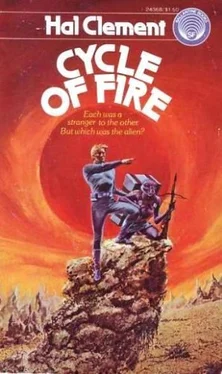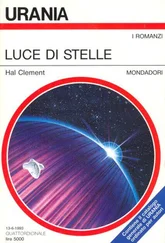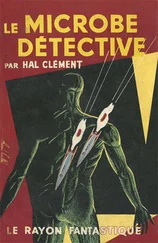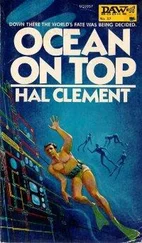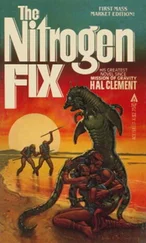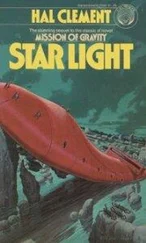However, it did not take long to find where the road led. Another two hundred yards down the slope it opened out into a paved space which Kruger labeled “parking lot” in his mind without even thinking. Several minutes of thought and investigation revealed no better name for it, so the two explorers returned to the buildings. Once inside the first of these, all recollection of the fact that they were already late for their appointment with the Teachers vanished from Kruger’s mind.
His first supposition was that this must be the city power plant. An electric generator is going to look pretty much the same whoever builds it and whatever causes it to turn, and the objects in the first building were quite plainly electric generators. They were large, though Kruger lacked the knowledge to tell whether they were large enough to supply the whole city. Their great armatures were mounted on vertical axles, and apparently the source of mechanical energy was below ground level. With this in mind the two made a rapid search and were rewarded by finding the head of a ramp that led downward as expected.
The only difficulty was that the ramp was both narrow and low. Kruger would have to go down on his hands and knees, and the slope was steep. Even if he worked his way down backward return would be difficult if not impossible, for the ramp was floored with smooth metal and traction was very poor. Dar was in even worse case; the size question bothered him less, but his claws for the first time in the history of their acquaintance were less suited to the situation than Kruger’s feet. Kruger finally decided that discretion was the better part of valor, and postponed exploration of the lower level until the other buildings had been examined.
This took some time, for the place was fascinating. All sorts of technical equipment were to be found. All of it was much too big to move, to Kruger’s disappointment, but it left no doubt that the city builders were a highly civilized race. The generators and motors, furnaces and machine tools told all that was really important to know about them — except what had forced them to leave, to abandon their city and their equipment. War would have ruined both; plague should have left some traces of bodies, unless they were soft-bodied beings such as mollusks. Kruger, as a young man who had grown up on Earth during the first decade of interstellar exploration, was quite prepared to believe this last possibility, but even he did not take it for granted.
Always there were the conflicting facts: a partly submerged city which must have been abandoned for centuries — and machines with only a thin film of dust, pavings still free of vegetation, walls straight and uncracked with sound mortar and firm masonry which must have been maintained with care until fairly recently. It looked as though most of the machines would run if they were simply cleaned and power supplied to them.
The group of buildings, given time, would have served as a school in which any competent archaeologist could have learned practically anything which could be asked about their makers; one of them, in fact, might almost have been designed as a school. It concained a beautiful relief model of the two volcanoes, the city between, the harbor — though it did not show any water level — and the great pit beside which the building itself stood. In addition, many of the machines present full-scale in the other buildings were here in model form; the two investigators would probably have spent hours here alone had it not been for one fact.
There was another ramp leading downward from the single floor of this structure, and this time it was large enough for Dar to walk upright without difficulty. Also, its slope was much less than that of the preceding one, and the floor formed of a rough composition in which the little native’s claws could readily find a grip. Finally, it led in toward the pit; and without further ado, once this fact was digested, the two started down its gentle slope.
The light was not good, but enough came from the building they had left to enable them to see any branches in the tunnel. For some time there was none; then a number of open doorways appeared on each side. Judging by echoes, they led into empty rooms; it was now too dark to check this by sight. A moment later, however, a faint light appeared ahead of them.
They did not turn all their attention on this light at once, however. Another distracting circumstance arose. At almost the same moment that Dar caught the illumination a whistling roar sounded behind them and they felt a sudden wave of heat. As one they leaped forward; and as they did so, sound and heat subsided. A faint draft from the building they had left carried a cloud of water vapor around them and on toward the end of the tunnel.
“What in the Pleiades was that?” Kruger asked of no one in particular.
“Another geyser?” Dar’s response was only half a question.
“Awfully brief.” Kruger started carefully back toward the source of the disturbance, ready to leap toward the pit once more if it seemed necessary.
It did. It happened again. And after some minutes of experiment it became evident that jets of live steam which played across the corridor were released by the weight of anyone standing or walking on the corridor floor approximately ten yards from the nozzles that supplied the steam.
“Which is interesting,” Kruger concluded. “I suppose we should be thankful that they set the thing up to warn us. It would have been just as easy, I should think, to put the trigger right in front of their blasted pipes.”
“It would seem that they wanted to keep whatever was in here, inside,” was Dar’s contribution, “but didn’t care if anyone or anything came in from outside. I find myself quite interested in what may be present at the other end of this tunnel. Do you have your knife, Nils?”
“I do. I’m right behind you, Robin Hood!”
With crossbow cocked and pointing forward the little Abyormenite strode down the slope toward the brightening light. Kruger followed. It occurred to both of them that the recent sounds would have destroyed any chance of taking whatever lay ahead by surprise, but neither mentioned this aloud.
THEY NEEDN’T have worried. It was decidedly an anticlimax, but after more than an hour of searching the crater floor they were forced to conclude that there was no animal in the enclosure larger than a squirrel. This was a relief in one way, but left the reason for the trap in the tunnel even more obscure than it had been. They discussed this as they rested beside the pond and ate meat which Dar’s bow had provided.
“Finding nothing living here is reasonable, I suppose, with the city deserted, but you’d think that there’d at least be a skeleton,” Kruger remarked.
Dar scraped at the loamy soil with one claw.
“I don’t know about that. Even bones from which flesh has been entirely eaten don’t last very long, and if there’s much meat left they go immediately. Still, you’d expect some traces of occupancy in those dens along the wall — the ones we saw from overhead.” These openings had all been explored in search of either the inhabitant of the pit or another way out of it, but were nothing but concrete caves.
Kruger’s tendency was to sit and theorize about the possible function of the crater in the days when the city was inhabited; Dar had a rather more practical question.
“Whether it was to keep bad people or bad animals means little to us just now,” he said. “The trouble is it seems adequate to keep us , too. Admittedly, we will not starve; there is food and water. However, I have too few years to live to want to spend them in this place, and I am far from my books. Would it not be better to be planning a way out?”
Читать дальше
